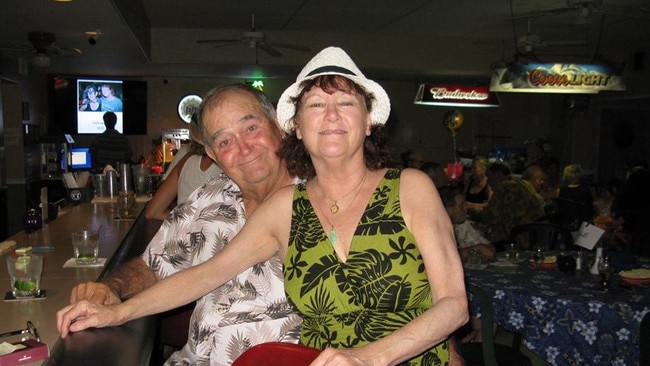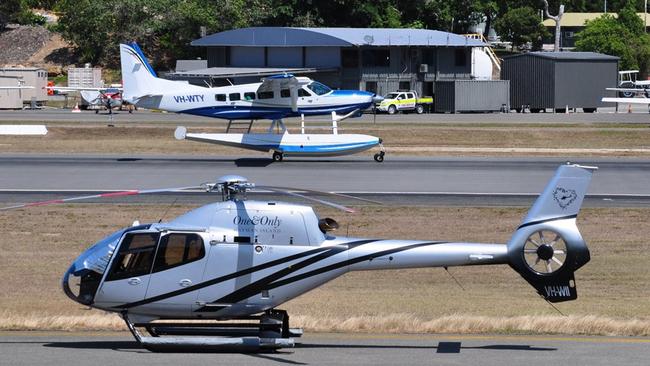Safety briefing lacking before fatal Whitsundays helicopter crash
Passengers on board a helicopter that crashed off Hamilton Island had not been shown how to open the emergency exits.

Business
Don't miss out on the headlines from Business. Followed categories will be added to My News.
Passengers on board a helicopter that crashed off Hamilton Island in March 2018, were not shown how to operate the chopper’s emergency exit prior to the flight that ended two lives.
The Australian Transport Safety Bureau’s final report found a broad combination of factors contributed to the tragic outcome, including an inadequate safety briefing for passengers and the pilot’s lack of experience on the EC120B helicopter.
American honeymooners Peter and Sue Hensel were killed in the crash, while the pilot and two other US tourists survived.
The ATSB report said the four passengers booked the flight to Hardy Reef pontoon with Whitsunday Air Services after their first choice of transport, a boat, broke down on the way.
Upon approach to the pontoon, an emergency message appeared on the helicopter’s vehicle engine multifunctional display and the pilot opted to go around.
As he did so, the chopper lurched rapidly to the left and the pilot was unable to recover the situation.
With no time to deploy the helicopter’s floats and conduct a controlled ditching, the chopper collided with the water, and started to sink.
Although the pilot and two rear passengers managed to escape and swim to the pontoon, the other two passengers were unconscious and did not survive.
The ATSB investigation found difficulties opening the emergency exit delayed the evacuation of passengers at a critical time.
The report also revealed that although the pilot had a total of 1300 flying hours, he had only obtained a new type rating to fly the EC120B two weeks before the crash, and had accumulated just 11 hours in command of the helicopter.
He had also flown about 16 hours in another technically different helicopter type, the report said.

ATSB director of transport safety Mike Walker said ideally the pilot would have had more opportunity to consolidate the skills required for conducting operations to pontoons.
“Since this accident, the operator (Whitsunday Air Services) has implemented several additional processes for pilots transferring to new helicopter types and for operations at pontoons,” Dr Walker said.
“This includes pilots conducting only into-wind operations at pontoons until they have obtained 20 hours on type.”
Whitsunday Air Services had also introduced a safety management system, and made other enhancements to its operations, including more detailed passenger safety briefings.
“It is imperative that passenger safety briefings include how to operate the passenger’s seatbelt and operation of the emergency exits,” said Dr Walker.
“Operators and pilots of EC120Bs should ensure that passengers in the rear of the helicopter are specifically briefed about the location of the operating handle and the three actions required to open the rear left sliding exit – which is to pull the handle up, push the door out, and slide the door back.”
The ATSB also noted that the Civil Aviation Safety Authority had not examined Whitsunday Air Services’ procedures and practices for conducting operations to pontoons at Hardy Reef, despite the flights being the operator’s primary activity.
A statement from Whitsunday Air Services, said the operator remained “committed to the safety of their passengers and staff”.
“Whitsunday Air Services consistently meets, and exceeds, the strict safety requirements defined by the aircraft manufacturer and by CASA,” the statement said.
“Our thoughts remain with the family and friends of Peter and Sue Hensel.”
More Coverage
Originally published as Safety briefing lacking before fatal Whitsundays helicopter crash





